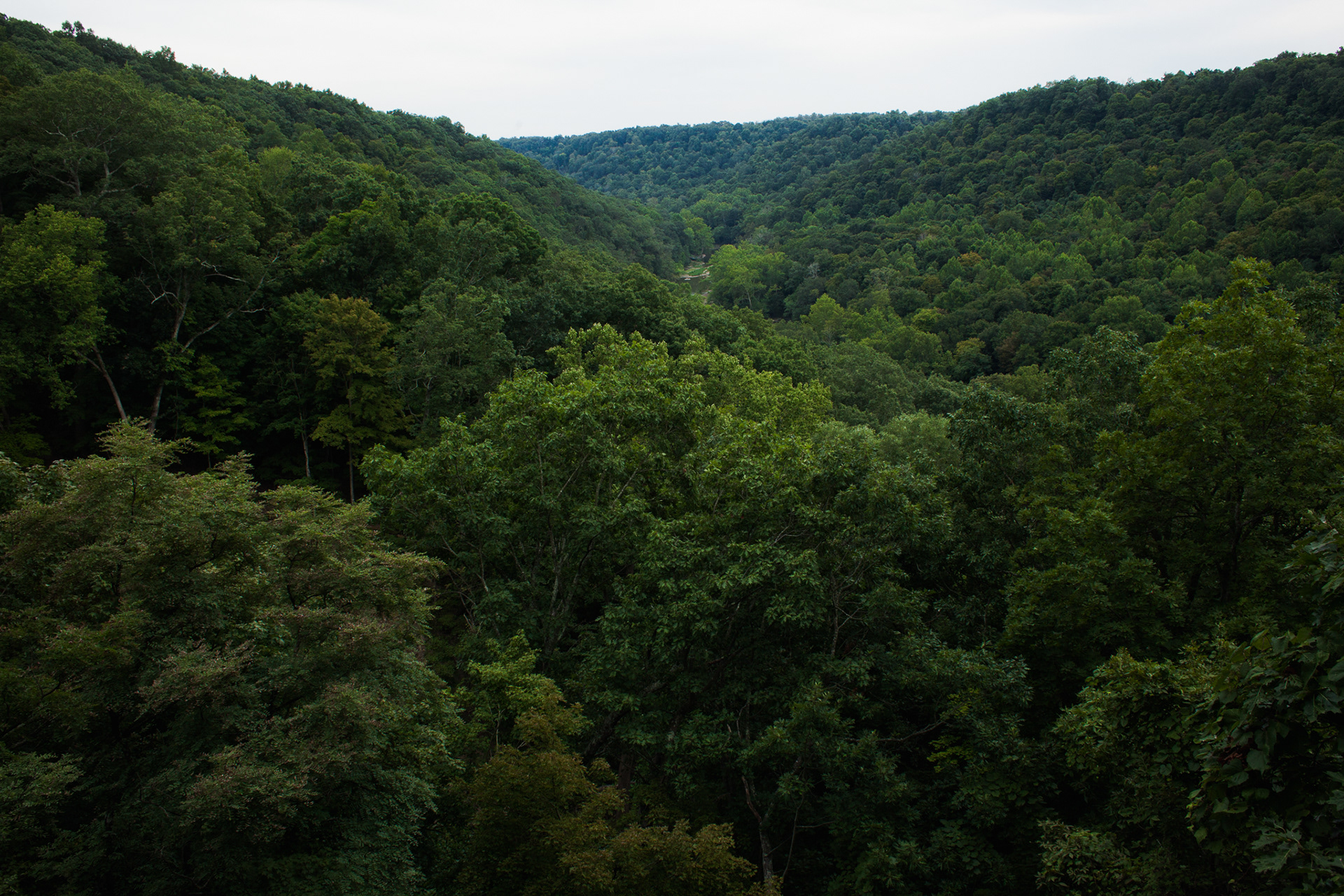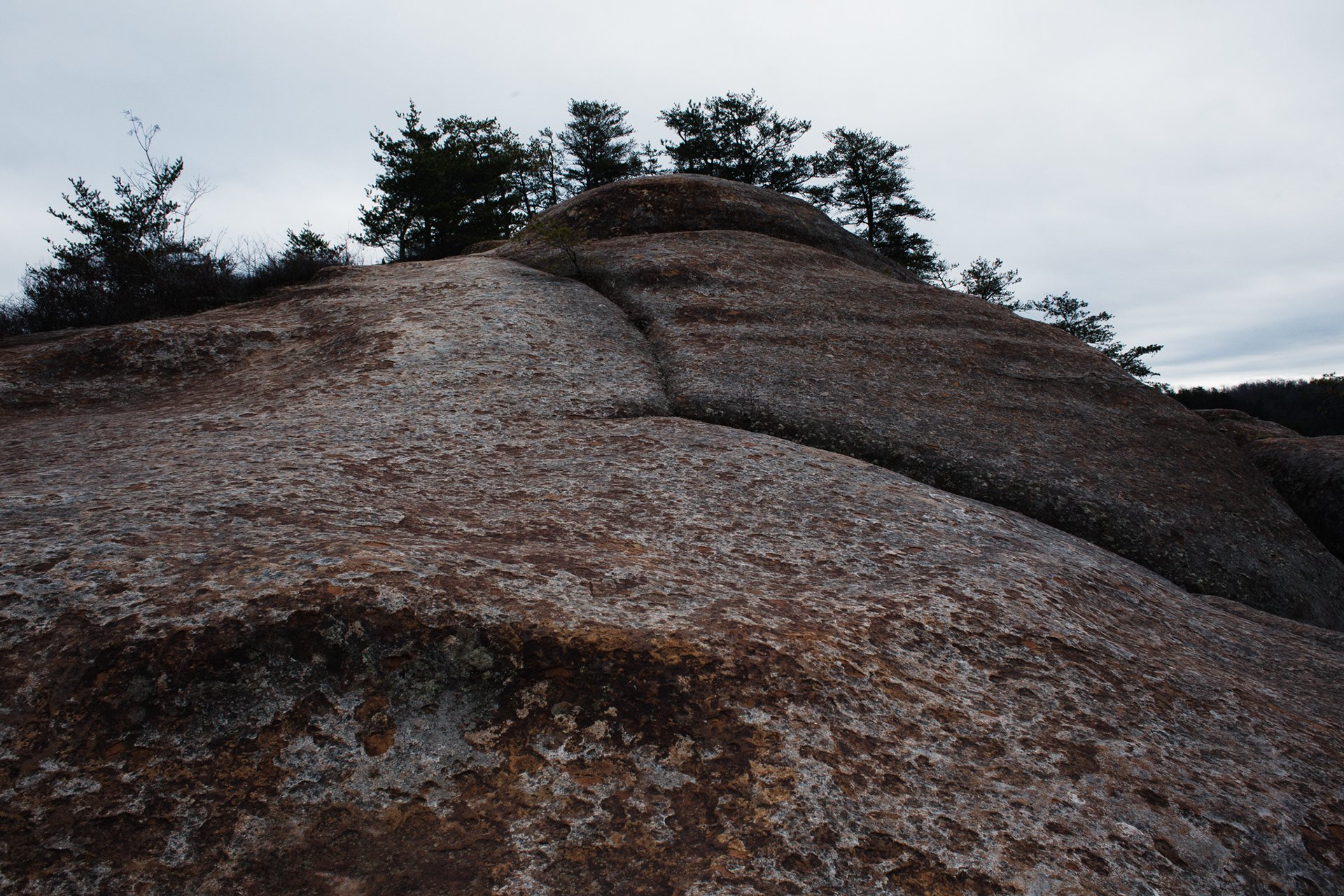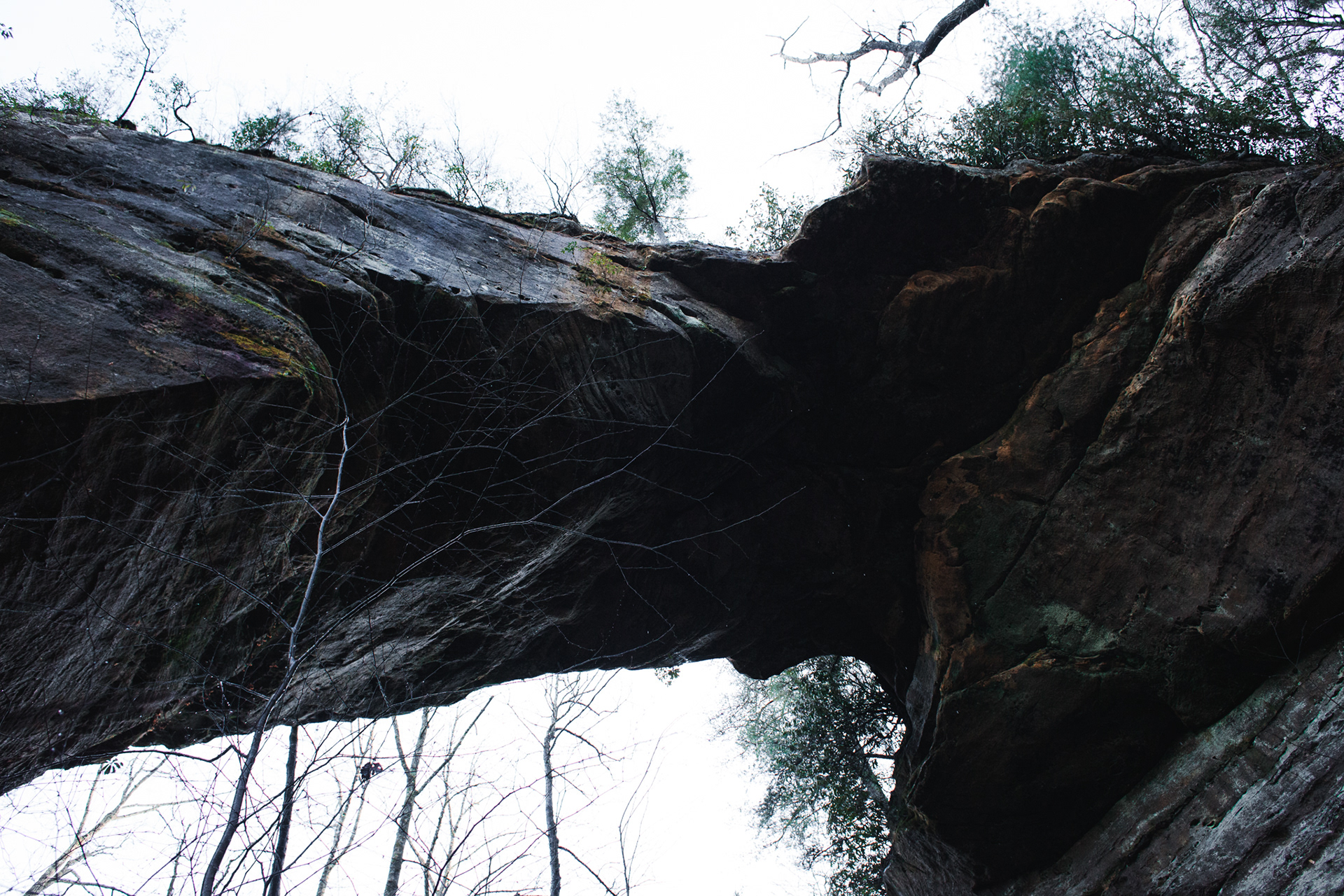EASTERN TEMPERATE FORESTS
THE PLAINS OF OHIO, INDIANA & SOUTH CAROLINA























THE ALLEGHENY PLATEAU
- APPALACHIAN OHIO, CARTER CAVES & RED RIVER GORGE, KENTUCKY -
The formation of the Allegheny Plateau began about 480 million years ago when the entire region was covered by shallow seas. Sediments like sandstone, limestone, and shale gradually settled to the ocean floor, and over time, these sediments compacted and turned into solid rock, forming the sedimentary bedrock of the plateau. Roughly 300 million years ago, during the Appalachian Orogeny (a geological event that was also responsible for the creation of the Appalachian Mountains), the Allegheny Plateau was uplifted as a result of the collision of tectonic plates. After the plateau was lifted, the erosive forces of water and ice began to shape the land. For millions of years, rivers and streams cut deep valleys and gorges into the plateau's surface, forming the rugged landscape that we see here today.































THE SOUTHWESTERN APPALACHIANS
- CUMBERLAND FALLS, KENTUCKY & BIG SOUTH FORK, TENNESSEE -
The Big South Fork of the Cumberland River flows through a 600 foot deep sandstone gorge before emptying into the Cumberland River. Within this gorge, which has been created by river and stream erosion, Appalachian mixed mesophytic forest can be found. Sometimes referred to as temperate rainforest, this type of forest is one of the most biologically diverse temperate regions on the planet, and can be found throughout the entire Appalachian region, including the Allegheny Plateau. Despite its ecological significance, this forest type is threatened by logging, mining, invasive species, pollution, urban sprawl, and road development. Appalachia also harbors the greatest diversity of salamander and freshwater fish, mussel, snail, and crayfish species in the world. These aquatic animals are highly sensitive to pollution, but, sadly, their numbers are on the decline. According to a 2021 study, mountaintop mining alone has caused a 40% loss to aquatic biodiversity in the greater Appalachian region.
















CENTRAL APPALACHIANS & BLUE RIDGE
- MONONGAHELA NATIONAL FOREST, SHENANDOAH & THE GREAT SMOKY MOUNTAINS NATIONAL PARKS -
The Appalachian Mountains, one of the oldest mountain ranges in the world, were formed over hundreds of millions of years through a complex series of geological processes. Around 480 million years ago, the region was submerged under shallow seas, and layers of sediment, including sandstone, limestone, and shale, accumulated on the ocean floor. Around 325 to 260 million years ago, during the Appalachian Orogeny - a period of intense tectonic activity - several tectonic plates collided. This collision caused the uplift and folding of the Earth's crust, leading to the formation of the Appalachian Mountains, a range that was once as tall as the Himalayas. For millions of years, erosion - including stream erosion - weathered away and sculpted the rugged landscape of the Appalachians, reducing the range's maximum elevation to 6,684 feet above sea level.


















